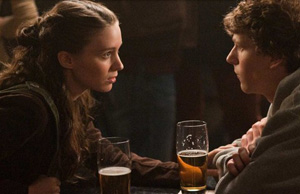
In my last post, I revealed the secret to effective subplots. Here I unveil the most important type of subplot.
To illustrate this critical subplot, I’m going to use examples from Tootsie. Why? Because I can’t think of a screenplay that makes better use of subplots than this 1982 comedy classic.
The central narrative of Tootsie – the “throughline” – is about an unemployable actor, Michael Dorsey, trying to maintain the pretence that he is Dorothy Michaels, one of America’s favourite “daytime” actresses. This is his “want”.
To make life difficult for Michael, the writers introduce several highly effective subplots – story lines that cause serious complications for the hero in the pursuit of this “want”.
- Michael is working on a play with flatmate, Michael
- Fellow actor on the show, John Van Horn hits on Dorothy
- Michael sleeps with platonic friend, Sandy
- Michael’s in love with Julie but she thinks he’s Dorothy
- Julie’s father falls for and eventually proposes to Dorothy
These are all great subplots because they all make it harder for Michael to maintain his duplicitous life and collectively they escalate the drama to a mad frenzy by the end of Act 2.
But one of the subplots does something more than just complicate the quest. It makes him question his want entirely. That’s the subplot involving Julie (Jessica Lange). This is the subplot that’s absolutely critical to the story and it’s what I call the “need” subplot.
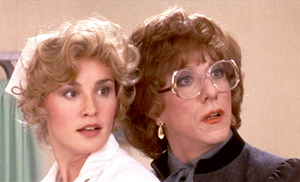
In a screenplay teeming with subplots, the one that ultimately causes Michael Dorsey (Dustin Hoffman) to question his want is his relationship with Julie (Jessica Lange).
In Tootsie, Michael’s overbearing want is this desire to be an actor. As usual, the protagonist’s want is all about external achievement. It’s about the ego. But that’s not what he really needs. What he really needs is love. What he really needs is Julie. In fact, while his want is to act, his need is to stop acting and get real.
Unfortunately for Michael, he can’t be Dorothy, successful actress, and have Julie. In order to get what he needs he’s going to have to give up what he wants and go back to being unemployable Michael Dorsey. That’s the dilemma he’s faced with at the Act 2 Turning Point: want vs need.
At the Act 3 climax, he opts for giving himself a chance with Julie and reveals his true identity live on national television. He chooses need over want, showing us he’s changed, and earning his spurs as a narrative hero.
Emotionally powerful movies tend to have those 3 narrative elements:
- The want that’s about external achievement
- Subplots that complicate the quest for the want
- A need subplot that’s at odds with the want
But it’s this final element, the need subplot, that can be so helpful in setting up for a dramatic and emotionally powerful conclusion. Why?
Because it lets you present your hero with a dilemma at the Act 2 Turning Point. Will they choose to continue pursuing their want? Or will they sacrifice their want in order to access the more interior pleasures of their need?
If they choose their want, they show they haven’t changed – and that’s what will happen in a tragedy.
If they opt for their need, they prove to us that they are altered and qualify as a “hero” in the narrative context. They might not win the “prize” but they’ll gain the more enduring pleasures of the interior.
How to introduce a “need” subplot
Since it’s about fulfilment, the need subplot is almost – but not always – about love.
Let’s look at how some great films have used the need subplot to create a dilemma for the protagonist and set up for a powerful conclusion.
Need subplot type 1: Love interest
In North by Northwest, Roger Thornhill (Cary Grant) is mistaken for George Kaplan, a man who is in very grave danger of being killed by bad guy, Phillip Vandamm (James Mason). Thornhill’s want is to sort out this misunderstanding before he gets killed – a not unreasonable want.
But that want is complicated by the fact that Thornhill meets Eve Kendall (Eva Marie Saint) while hiding on a train. Initially, he falls for her, then he believes her to be Vandamm’s moll before finally learning that she’s working for the good guys and will die – if he walks away.
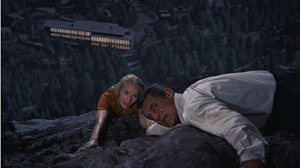
The need subplot that forces Roger Thornhill (Cary Grant) to question his want is his relationship with Eve Kendall (Eva Marie Saint) – which reaches its conclusion on Mt Rushmore.
From the inciting incident in Act 1, all Thornhill has wanted to do is get the hell out of this mess and go back to his selfish life as an advertising man and Mummy’s boy. But now he has a dilemma. Get your selfish want, and the woman you love will die – thereby denying you what you need: love. Cue Act 2 Crisis.
At the Act 3 Climax, Thornhill turns his back on his want and memorably rescues his need on the sculpted President’s faces of Mt Rushmore.
Social Network too sets up this tension between want and need. Mark Zuckerberg desires to be rich and famous – and creates Facebook to achieve that external want. But his need is love – in the specific form of Erica Allbright. The film’s tragic power in that final scene comes from the fact that he gets his want – beyond his wildest dreams – yet his need is still out of reach, because, at a character level, he’s failed to grow. As I noted in an earlier post, this screenplay, for all its verbal brilliance, would have fallen in a heap without this one critical subplot. The need subplot.
Need subplot type 2: the love triangle
In films involving a love triangle, the want and the need are both potential romantic partners.
Look at Bridget Jones’s Diary, for example. The throughline is that Bridget (Renee Zellwegger) wants bad boy boss Daniel Cleaver (Hugh Grant). That’s an external desire because Daniel represents what every young woman is meant to aspire to: a guy who’s handsome, successful, witty and charming. That’s her want.
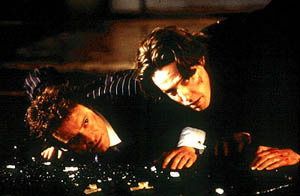
Bridget Jones has to choose between her dishy want, Daniel Cleaver (Hugh Grant) and her more substantial need, Mark Darcy (Colin Firth).
But then there is the subplot with family friend, Mark Darcy (Colin Firth). He’s not as dishy but he offers more satisfying pleasures. Daniel offers “achievement” while Mr Darcy offers fulfilment. The film is about Bridget struggling to overcome her desire to have what she wants and realise what she really needs.
Need subplot type 3: Friendship
But the need subplot doesn’t have to be about romantic love. It can be about friendship.
In An Officer and a Gentleman, Zack (Richard Gere) has a relationship with Paula (Debra Winger) but this isn’t the subplot that drives a wedge between want and need. At no point in the story does he have to choose between graduating from aviator school and having Paula. That dilemma is created by his friendship with fellow aviator candidate Sid Worley (David Keith).
Zack is a loner who hasn’t ever had a real friend. But early in the film he bonds with this unpretentious Okie and it’s Sid who, in Zack’s hour of need, sticks by him (He speeds past in a powerboat and moons Drill Sergeant Foley.)
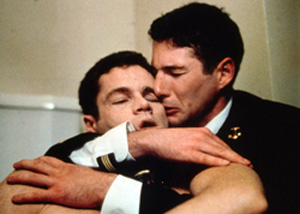
The need subplot in An Officer and a Gentleman is not the romance with Paula (Debra Winger), but the friendship with Sid Worley (David Keith).
So when Sid is duped by a “Puget Sound Deb” and commits suicide, Zack feels – rightly or wrongly – that Foley is partially to blame. So he challenges him to a martial arts duel. If he wants to achieve his want and graduate, this is not a smart thing to do. But he does it because his need – the love of his buddy – has overpowered his want, telling us he’s been altered for all time.
Need subplot type 4: The family
Another type of need subplot is where the love exists not with a lover or a friend but within the family.
In Little Miss Sunshine, almost all of the characters have external objectives that are all about “want”.
Richard (Greg Kinnear) wants to have his “9 Step Refuse to Lose” program published. Frank (Steve Carrel) wants to be America’s pre-eminent Proust scholar. Dwayne (Paul Dano) wants to be a jet pilot. And Olive (Abigail Breslin) wants to be Little Miss Sunshine.

In Little Sunshine, Olive’s outrageous dance is the act that finally releases her dysfunctional family from their wants and lets them embrace their need – love.
But what this highly dysfunctional family really needs is love. When Richard is asked to remove Olive from the stage at the finale, but refuses and instead joins her in dancing to Chic’s “Le Freak”, he shows us fulfilment beats achievement every time. They have all failed in their external goals, but the family is whole again.
Need subplot type 5: Self-expression
I said that the need subplot was almost always about love. One exception I can think of is where it’s about self-expression.
In Baz Luhrmann’s first (and best) film, Strictly Ballroom, the protagonist Scott (Paul Mercurio) has a desperate desire to win the Pan Pacific ballroom championships. That’s his want. As usual, it’s about exterior achievement. The ego.
While there is some romance with his dancing partner, Fran (Tara Morice), Scott’s need isn’t love. The story is not going to force him to choose between his desire for the championship and his love of Fran. It presents him with a different sort of dilemma.
The need subplot here is the discovery of a different, more passionate form of dancing that lets Scott truly be himself for the first time. This is his need.
But, the catch is that if he dances in this style, he won’t win the championship. His want is opposed with a need. What will he do? He makes the hero’s choice and dances the Paso Doble, which denies him the prize but delivers the fulfilment all human beings crave.\
Summary of the one subplot you really need
As human beings, we often lose sight of what’s really important. We think it’s about getting the prize and having the toys, despite experience telling us that life’s great joys are internal rather than external. A great transformative story reminds us of this eternal truth. How do you do that? With a subplot that offers your protagonist what they need – but that requires them to give up on their illusory want.
Join the Cracking Yarns mailing list
Learn about our Screenwriting Courses
Learn about our Online Screenwriting Courses
Learn about our Free Screenwriting Webinars
Learn about our Script Assessment options
Subscribe to the Cracking Yarns YouTube channel
Related screenwriting articles:
The secret to subplots
Why The Social Network shouldn’t work (and why it does)
